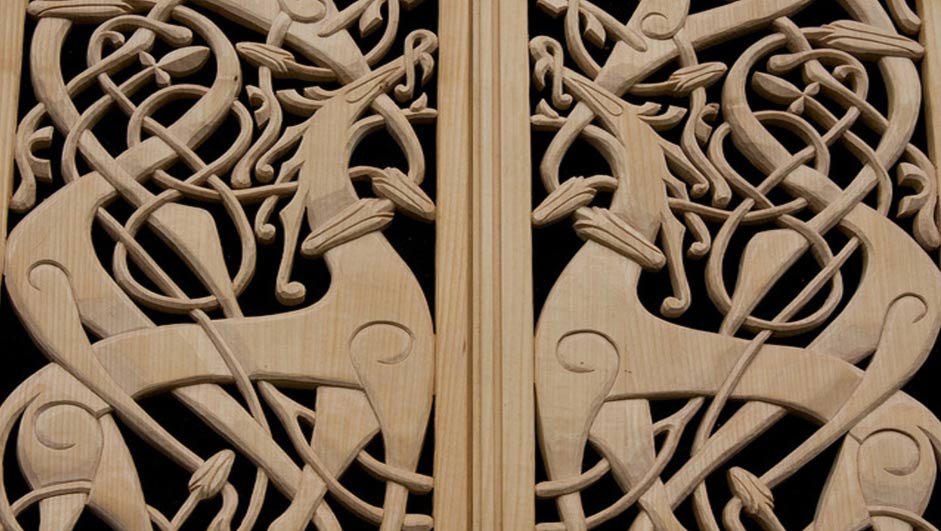Norsemen transformed international culture, manufacturing, tech and trade during Viking Era
The notorious reputation of the Vikings spanned thousands of years and across many lands. Bloodthirsty invaders intent on raiding and plundering is what many still imagine when speaking of Vikings. However, far from being simple barbarians, the Vikings are now known to be expert navigators, explorers, colonizers, farmers, settlers, accomplished builders and highly skilled traders.
In fact, according to research news website Phys.org, Vikings, renowned for their military prowess, were also experts in skilled craft and international trade. Indeed, it is theorized that lack of farmland and trade inequities at home, not necessarily piracy, is what drove many to seek out new opportunities in other lands.
During the Viking Age (793 AD to 1066 AD), Europe was undergoing transformation. The Anglo-Saxons, Franks, Frisians and Scandinavians were all contributing to technological advancements. However, with their rapid and far-reaching exploration of the day, Vikings were vital to the widespread innovation boom.

Pair of intricately crafted brooches, such as worn by most Viking women. Johnbod/Wikimedia Commons
“Technological developments emerged as people came together in growing coastal trading centres and market towns. The world was rapidly becoming more joined-up during this period than at any time since the heyday of the Roman Empire. Trade fostered international links across the North Sea, Baltic and beyond, and similar developments were happening as far afield as the Middle East, Africa, and Asia. This was a period in which people began to live and work in entirely new ways, and technological change was both a cause and an effect of this,” writes Phys.org.

Viking expeditions (blue line): depicting the immense breadth of their voyages through most of Europe, the Mediterranean Sea, Northern Africa, Asia Minor, the Arctic and North America. Wikimedia Commons
MORE
- New study shows Viking women accompanied men on voyages to colonize far-flung lands
- Newly-discovered ancient fortress reveals architectural accomplishments of Vikings
- Archaeologist to delve into Viking presence in Spain
Vikings are hailed for their remarkably high-quality Ulfberht swords, however, long distance trade increased urbanization, and created a need for manufacturing specialization. Specialized skills, tools, and complex methods were required to craft the trade goods of the day, and areas like shipping developed rapidly between the eighth and 11 th centuries. Warships were not the only vessels created, but also large cargo ships were built, which would be used to dominate long-distance marine trade during this period.
Some of the items cited as significant evidence of advanced manufacturing during the Viking Age are ornate, mass-produced brooches, glass bead jewelry, and intricate combs.
In order to craft such finely worked (yet mass-produced) goods, special tools and techniques were needed. Also required was a shared cultural knowledge and long-range communication, as well as dependable supply chains and a large market.
Brooches of the time were often crafted by making casts of existing pieces in clay, melting high-quality metals in crucibles, and pouring this into the molds.

Arm rings or armlets made by twisting thick and thin rods of gold or silver were common during the Viking period, when wealth was literally worn on one's sleeves. Arm rings, the portable savings accounts of the Vikings, would be collected, exchanged, or hacked up to provide weighed amounts of gold to purchase goods. 9 th century. Public Domain
The beaded jewelry was produced by shaping melted glass that came from the Mediterranean in the form of small, raw square blocks called tesserae.
Viking hair combs were a status symbol as much as a practical grooming or beauty item. They were meticulously carved from animal bone or deer antler, and it is theorized that Combmakers would move from town to town selling their wares.

Animal bone and antler combs were painstakingly crafted, but traded widely. Credit: British Museum
It is through the creation of these advanced trade goods and the Viking movement between various cultures, towns, cities, and across oceans, that it can be shown that Vikings era tradesmen were early supporters of international trade, technological advancement, and business growth.
A study on crafting networks in Viking-period towns by University of York’s Department of Archaeology notes, “Striking similarities of material culture show that these places, though sometimes separated by hundreds of kilometers, were often as tightly related as neighboring villages.”
It is long past time to change the old understanding of Vikings as simple plunderers, and recognize that their vast trade networks, and their contributions to craft advancement, connected the world in a way that would make history and shape the world as it is today.
Featured Image: Viking patterned woodwork. Hans Splinter/Flickr
By Liz Leafloor


















